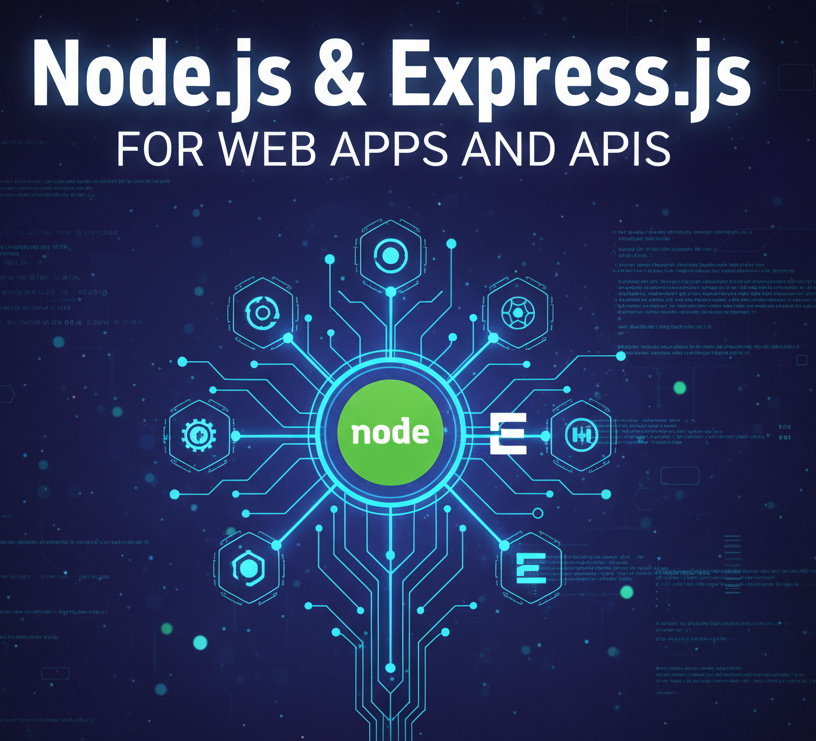- Great Learning
- Free Courses
- Machine Learning
Earn a certificate & get recognized
NumPy Tutorial
Learn one of the most important libraries of Python Programming – Numpy through our free Numpy tutorial. Understand scalar functions, mathematical operations, arrays, joins, intersection, and matrix calculations.
Instructor:
Mr. Bharani AkellaNumPy Tutorial
15K+ learners enrolled so far
Stand out with an industry-recognized certificate
10,000+ certificates claimed, get yours today!
Get noticed by top recruiters
Share on professional channels
Globally recognised
Land your dream job

Skills you will gain
Numpy Scalar Functions
Numpy Mathematical Operations
Numpy Arrays
Numpy joining
intersection
and difference
Numpy Matrix Calculations
+2 More
Key Highlights
Get free course content
Master in-demand skills & tools
Test your skills with quizzes
About this course
The course will introduce you to Numpy basics with a few examples. You will understand how you can use Numpy in Python programming. Next, you will learn about its various mathematical functions such as sum, subtract, multiply, and divide. Later, you will get familiar with the scalar functions of Numpy, wherein you will comprehend arrays of two different dimensions, such as a single and multi-dimensional array. Moving ahead with the tutorial, you will be introduced to Numpy operations, including the joining of arrays, intersection, and the difference between arrays. In addition, you will also learn Numpy Matrix calculations, mainly the multiplication of elements in the matrix.
Are you ready to upskill yourself than Numpy? Great Learning offers a highly professional Artificial Intelligence and Machine Learning program that covers every skill you need to become an accomplished Python Developer.
Course outline
Introduction to NumPy
In the first chapter of the tutorial, you will understand Numpy in detail. You will also learn to create different arrays using Numpy. Next, you will be familiarized with various implementations of Numpy arrays with examples using Jupyter Notebook.
NumPy Operations
The next module will help you to identify the shapes of Numpy arrays. Later, you will see multiple options for joining Numpy arrays. Lastly, you will learn the implementation of Numpy intersections and differences with the help of the Jupyter Notebook.
NumPy Mathematics
Later, you will be introduced to some common calculations done with Numpy arrays. The tutor will give you examples of adding Numpy arrays and also brief you on the scalar operations of arrays. Lastly, you will understand how you can use mean, std, and median functions for Numpy arrays.
NumPy Matrix
In the last module, the tutor will conceptualize you with the Numpy Matrix and how you can access specific elements of the matrix. next, you will learn to perform matrix multiplication on Numpy arrays. Lastly, you will understand how to save the created array and load it after saving.
Get access to the complete curriculum once you enroll in the course
Stand out with an industry-recognized certificate
10,000+ certificates claimed, get yours today!
Get noticed by top recruiters
Share on professional channels
Globally recognised
Land your dream job

NumPy Tutorial

1.5 Hours
Beginner
15K+ learners enrolled so far
Get free course content
Master in-demand skills & tools
Test your skills with quizzes
Refer and earn
Get learning discounts up to $20
Learner reviews of the Free Courses
5.0

5.0
5.0

5.0

4.0
Our course instructor

Mr. Bharani Akella
Data Scientist
Machine Learning Expert
Frequently Asked Questions
Will I receive a certificate upon completing this free course?
Is this course free?
What are the prerequisites required to learn this Numpy Tutorial?
Learning from this course doesn’t require any prerequisites such that any learner can enroll and start this course without any hustle.
How long does it take to complete this free Numpy Tutorial?
The course contains one hour of video content that you can study at your own pace. The courses provided by Great Learning Academy are self-placed, and any learner can finish them anytime.
Will I have lifetime access to the free course?
Yes, the course comes with lifetime access. So, you can revisit the course anytime you feel like revising your knowledge.
What are my next learning options after this Numpy Tutorial?
Once you finish this course and you decide to build your career in this domain, you can opt for the Great Learning’s Machine Learning course that will give you advanced learning and implementation of Numpy and other concepts. With this paid course, you will learn the advanced level skills of Domain and also get a course certificate at the end.
Is it worth learning Numpy?
Numpy is an important library of Python programming language which has many useful applications, including Machine Learning, statistics, data science, bioinformatics, and data analytics. Learning the Numpy library will enhance your understanding of data and statistics, building your career in data science.
What is Numpy used for?
Numpy is used for working with arrays, and various functions such as linear algebra, matrices, and Fourier transform can also be used. The most common use of Numpy is for scientific calculations.
Why is Numpy so popular?
The popularity of Numpy is because it provides a wide range of mathematical operations on arrays. It is also called the fundamental package for scientific computing in Python. The operations provided by Numpy have more value in statistics and scientific calculations.
What jobs demand that you learn Numpy?
Various jobs require Numpy as one of the important skills. These jobs include the following:
1. Python Developer
2. Data Scientist
3. Data Engineer
4. Quality Assurance Engineer
5. Data Analyst
Will I get a certificate after completing this Numpy Tutorial?
Yes, you will get a course completion certificate at the end of the course. To avail the certificate, you need to take the quiz after finishing all chapters of the course.
What knowledge and skills will I gain upon completing this Numpy Tutorial?
In this course, you will learn several mathematical operations that you can perform on arrays using Numpy. You will also gain some useful skills such as Numpy Arrays, Numpy Operations, Numpy Mathematical Functions, and Numpy Matrix.
How much does this Numpy Tutorial cost?
The Great Learning Academy provides this tutorial free of cost, and anyone can enroll in this free course to know about the most used library in the Pandas package of Python programming.
Is there a limit on how many times I can take this Numpy Tutorial?
No, the course doesn’t come with any limit. You can take this course as many times as you want. Once you feel about revising the learnings, you can revisit the course and start the course again.
Can I sign up for multiple courses from Great Learning Academy at the same time?
Yes, Great Learning Academy provides courses in various domains and you can join multiple courses simultaneously to achieve your career goals.
Why choose Great Learning Academy for this Numpy Tutorial?
Great Learning Academy is a huge platform that provides education in almost every domain. The courses provided by Great Learning Academy are self-placed and anyone can start these courses without any hustle. This Numpy course is specially designed for those who are interested in the data science and statistics domain. This course is available at free of cost. So, you can enhance your knowledge with this course for free.
Who is eligible to take this Numpy Tutorial?
Any learner who wants to establish their career in Python Programming, software development, or data science can take this course, which helps them build a strong foundation in the Numpy library of Python Programming language library.
What are the steps to enroll in this course?
- Firstly, you need to visit the course page that you are interested in.
- Click the “Enroll for free” button on the course page that will take you to a registration page.
- Register yourself with Great Learning Academy to access this free course.
- Finally, you can access the course from your account dashboard and start learning.
Become a Skilled Professional with Pro Courses
Gain work-ready skills with guided projects, top faculty and AI tools, all at an affordable price.


View Course

Included with Pro+ Subscription

View Course

Included with Pro+ Subscription
.jpg)
View Course

Included with Pro+ Subscription


View Course

Included with Pro+ Subscription


View Course

Included with Pro+ Subscription

View Course

Included with Pro+ Subscription

View Course

Included with Pro+ Subscription

View Course

Included with Pro+ Subscription




View Course

Included with Pro+ Subscription

View Course

Included with Pro+ Subscription

View Course

Included with Pro+ Subscription
.jpg)
View Course

Included with Pro+ Subscription

View Course

Included with Pro+ Subscription

View Course

Included with Pro+ Subscription


View Course

Included with Pro+ Subscription


View Course

Included with Pro+ Subscription


View Course

Included with Pro+ Subscription


View Course

Included with Pro+ Subscription


View Course

Included with Pro+ Subscription


.png)
View Course

Included with Pro+ Subscription

View Course

Included with Pro+ Subscription

View Course

Included with Pro+ Subscription

View Course

Included with Pro+ Subscription

View Course

Included with Pro+ Subscription


View Course

Included with Pro+ Subscription
.jpg)
View Course

Included with Pro+ Subscription

View Course

Included with Pro+ Subscription

View Course

Included with Pro+ Subscription
.png)
View Course

Included with Pro+ Subscription

View Course

Included with Pro+ Subscription

View Course

Included with Pro+ Subscription

View Course

Included with Pro+ Subscription

View Course

Included with Pro+ Subscription


View Course

Included with Pro+ Subscription

View Course

Included with Pro+ Subscription

View Course

Included with Pro+ Subscription
.png)
View Course

Included with Pro+ Subscription
.jpg)
View Course

Included with Pro+ Subscription
.jpeg)
View Course

Included with Pro+ Subscription
.jpg)
View Course

Included with Pro+ Subscription
.jpg)
View Course

Included with Pro+ Subscription

View Course

Included with Pro+ Subscription

View Course

Included with Pro+ Subscription


View Course

Included with Pro+ Subscription


View Course

Included with Pro+ Subscription


View Course

Included with Pro+ Subscription
.png)
View Course

Included with Pro+ Subscription



.png)


View Course

Included with Pro+ Subscription


View Course

Included with Pro+ Subscription

View Course

Included with Pro+ Subscription

View Course

Included with Pro+ Subscription
.png)
View Course

Included with Pro+ Subscription
.png)
View Course

Included with Pro+ Subscription
.png)
View Course

Included with Pro+ Subscription
Popular


View Course

Included with Pro+ Subscription

View Course

Included with Pro+ Subscription
.jpg)
View Course

Included with Pro+ Subscription


View Course

Included with Pro+ Subscription


View Course

Included with Pro+ Subscription

View Course

Included with Pro+ Subscription

View Course

Included with Pro+ Subscription

View Course

Included with Pro+ Subscription
AI & Generative AI




View Course

Included with Pro+ Subscription

View Course

Included with Pro+ Subscription

View Course

Included with Pro+ Subscription
.jpg)
View Course

Included with Pro+ Subscription

View Course

Included with Pro+ Subscription

View Course

Included with Pro+ Subscription
Microsoft Courses


View Course

Included with Pro+ Subscription


View Course

Included with Pro+ Subscription


View Course

Included with Pro+ Subscription


View Course

Included with Pro+ Subscription


View Course

Included with Pro+ Subscription


Data Science & ML
.png)
View Course

Included with Pro+ Subscription

View Course

Included with Pro+ Subscription

View Course

Included with Pro+ Subscription

View Course

Included with Pro+ Subscription

View Course

Included with Pro+ Subscription


View Course

Included with Pro+ Subscription
IT & Software
.jpg)
View Course

Included with Pro+ Subscription

View Course

Included with Pro+ Subscription

View Course

Included with Pro+ Subscription
.png)
View Course

Included with Pro+ Subscription

View Course

Included with Pro+ Subscription

View Course

Included with Pro+ Subscription

View Course

Included with Pro+ Subscription

View Course

Included with Pro+ Subscription


View Course

Included with Pro+ Subscription
 (1).png)
View Course

Included with Pro+ Subscription


View Course

Included with Pro+ Subscription

View Course

Included with Pro+ Subscription


View Course

Included with Pro+ Subscription

View Course

Included with Pro+ Subscription

View Course

Included with Pro+ Subscription
.png)
View Course

Included with Pro+ Subscription
.png)
View Course

Included with Pro+ Subscription

View Course

Included with Pro+ Subscription

View Course

Included with Pro+ Subscription

View Course

Included with Pro+ Subscription

View Course

Included with Pro+ Subscription

View Course

Included with Pro+ Subscription
Management

View Course

Included with Pro+ Subscription

View Course

Included with Pro+ Subscription
.png)
View Course

Included with Pro+ Subscription
.jpg)
View Course

Included with Pro+ Subscription
.jpeg)
View Course

Included with Pro+ Subscription
.jpg)
View Course

Included with Pro+ Subscription
.jpg)
View Course

Included with Pro+ Subscription

View Course

Included with Pro+ Subscription

View Course

Included with Pro+ Subscription
.png)
View Course

Included with Pro+ Subscription
.png)
View Course

Included with Pro+ Subscription
.png)
View Course

Included with Pro+ Subscription
 (1).jpg)
View Course

Included with Pro+ Subscription

View Course

Included with Pro+ Subscription
.png)
View Course

Included with Pro+ Subscription
.png)
View Course

Included with Pro+ Subscription
Cloud Computing


View Course

Included with Pro+ Subscription


View Course

Included with Pro+ Subscription


View Course

Included with Pro+ Subscription
.png)
View Course

Included with Pro+ Subscription



.png)


View Course

Included with Pro+ Subscription


View Course

Included with Pro+ Subscription
.png)

View Course

Included with Pro+ Subscription
.jpg)

.jpg)

.png)

View Course

Included with Pro+ Subscription


Cyber Security

View Course

Included with Pro+ Subscription

View Course

Included with Pro+ Subscription
.png)
View Course

Included with Pro+ Subscription
.png)
View Course

Included with Pro+ Subscription
.png)
View Course

Included with Pro+ Subscription
Subscribe to Academy Pro+ & get exclusive features
$25/month
No credit card required

Learn from 40+ Pro courses

Access 500+ certificates for free

700+ Practice exercises & guided projects

Prep with AI mock interviews & resume builder
Recommended Free Machine Learning courses




Similar courses you might like




Related Machine Learning Courses
-
Personalized Recommendations
Placement assistance
Personalized mentorship
Detailed curriculum
Learn from world-class faculties
50% Average salary hike -


Johns Hopkins University
Certificate Program in AI Business Strategy10 weeks · Online
Know More
-


Walsh College
MS in Artificial Intelligence & Machine Learning2 Years · Online
Know More
-


MIT Professional Education
No Code AI and Machine Learning: Building Data Science Solutions12 Weeks · Online · Weekend
Learn from MIT FacultyKnow More













